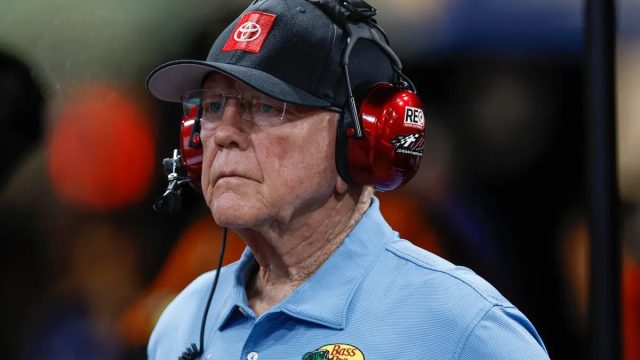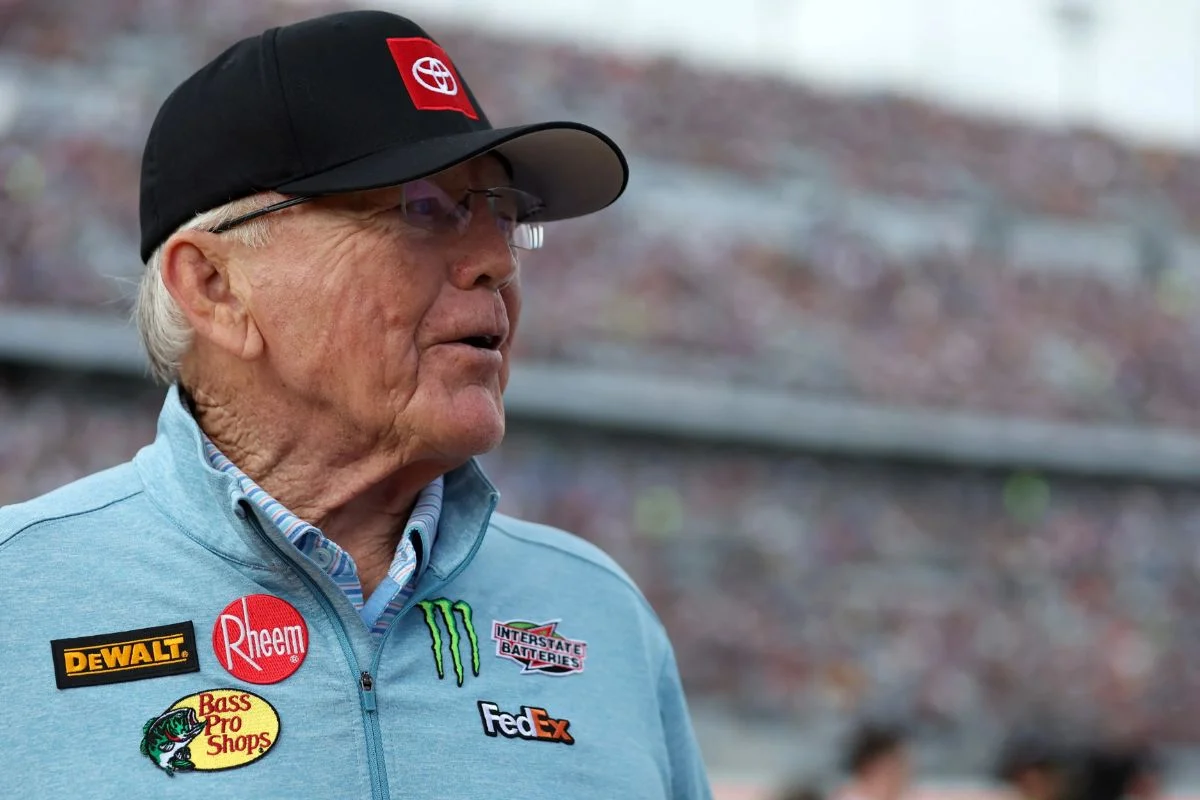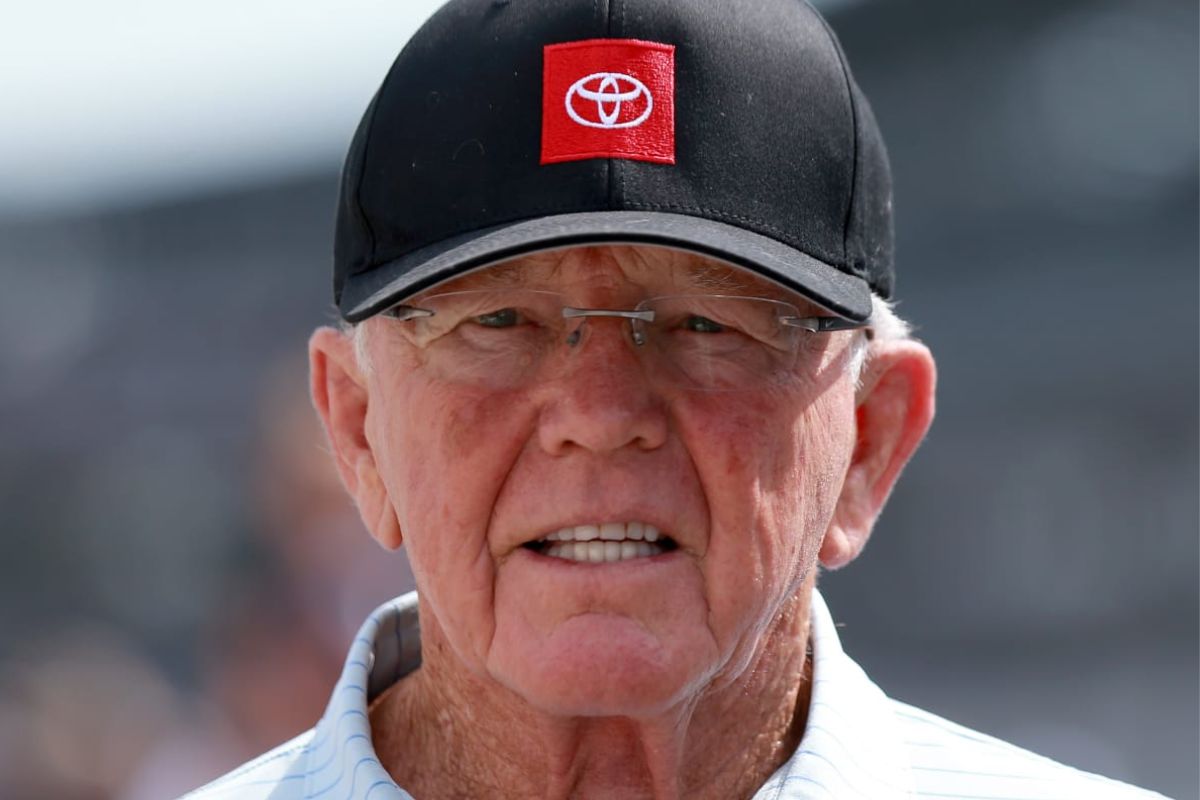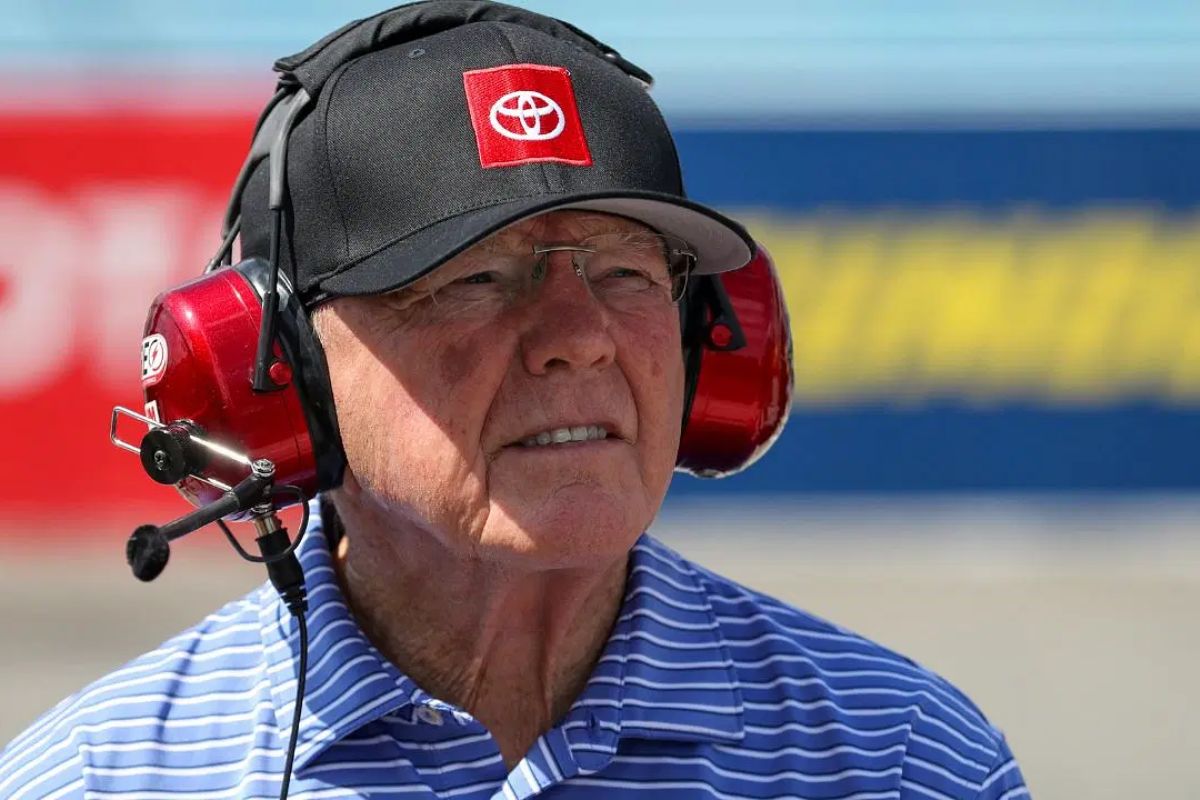Joe Gibbs Shocking 90200 Dollar Expense: The disclosure of Joe Gibbs‘ staggering $90,200 weekly expenditure on tires highlights a broader issue within NASCAR that goes beyond mere sticker shock. This figure, indicative of the immense costs associated with maintaining competitive standards in top-tier motor racing, brings to light the urgent need for a systemic financial review in the sport. As teams grapple with the escalating expenses that can impact the outcome of races and championships, the sustainability of current financial models is called into question.
Key Takeaways
- Joe Gibbs Racing incurs a weekly expense of $90,200 solely on tires for NASCAR races.
- Fans are shocked by the high costs, sparking debates on financial fairness in NASCAR.
- The high tire expense is intensifying calls for charter negotiations and financial reforms.
- Criticisms target Goodyear for the perceived disparity between tire cost and quality.
- This financial disclosure is pushing fans to demand more transparency and economic restructuring in NASCAR.
NASCAR Teams’ Charter Negotiations
In recent negotiations, prominent NASCAR teams such as Joe Gibbs Racing, Hendrick Motorsports, and 23XI Racing are advocating for a significant restructuring of charter agreements to secure a larger portion of broadcasting revenues and improved governance rights. This push highlights a crucial shift in the dynamics of NASCAR’s operational framework, reflecting deeper trends in sports management where teams are increasingly seeking greater influence over league economics and policy decisions.
The heart of the teams’ demands lies in altering the revenue distribution model to obtain 45% of traditional media revenue. This figure is not just a mere increase; it represents an important change towards recognizing the substantial role these teams play in generating fan engagement and the marketability of NASCAR events.
Additionally, the pursuit of permanent charters solidifies a quest for long-term security, ensuring teams can invest confidently in their operations and strategic growth without the looming uncertainty of charter renewal.
Equally crucial is the demand for 33% of new revenue streams, which likely include digital platforms and international broadcasting rights. This is indicative of a forward-thinking strategy, positioning these teams to capitalize on NASCAR’s global expansion and the digital transformation of sports viewership.
NASCAR’s hesitance to acquiesce to these terms suggests a complex negotiation phase ahead. The outcome will not only redefine financial and operational paradigms within the sport but also set a precedent for how major racing leagues manage the interplay between organizational control and team profitability.
The Financial Strain on NASCAR Teams
Reflecting on the negotiations for increased revenue shares, it’s evident that NASCAR teams like Joe Gibbs Racing are grappling with a myriad of financial challenges, highlighted recently by their staggering weekly expenditures. The economic challenges facing these teams are multifaceted and stem from different operational necessities that are essential yet financially burdensome.
The financial ecosystem of NASCAR is complex, with revenue streams that are not always proportional to the expenses incurred. Sponsorship deals, which have traditionally been the lifeline for these teams, are becoming harder to secure and more competitive, adding another layer of difficulty to financial planning. The instability of these revenue streams means that teams often find themselves in difficult financial positions, having to balance between maintaining competitive performance and ensuring economic viability.
Moreover, the financial strain is exacerbated by the need to continually invest in technological advancements and research to stay competitive. This is not merely a matter of upgrading equipment but involves thorough developmental strategies that include simulations and testing, which are resource-intensive. The cost of failure in these ventures is not just financial but can also lead to competitive disadvantages, making the stakes exceedingly high.
The recent negotiations for better revenue sharing are indicative of a broader trend where teams are seeking more sustainable financial models within NASCAR’s framework. These discussions are significant as they reflect an urgent need for a structure that supports the teams’ financial health, ensuring that the sport remains competitive and viable in the long term. The outcome of these talks will likely be a bellwether for the economic future of NASCAR teams.
Breakdown of NASCAR Team Expenses
Exploring the financial intricacies of NASCAR racing reveals an array of significant expenses that highlight the sport’s demanding economic landscape. A central point of these costs is the engine, which is not only essential for performance but also one of the most expensive components of a race car. Depending on the specifications and enhancements, an engine can cost anywhere between $60,000 and $150,000. This range highlights the critical investment in power and reliability needed to compete at the highest levels.
“NASCAR tires are $550 each, so how much does the team spin on them for one race? Our team has four cars in every race. Each car gets one set for practice. And they’ll get a fresh set for qualifying. And then before the race they’ll get yet, another set. We’ll hang onto the slightly used qualifying tires in case we need them during the race. The #20 car pitted for four tires seven times. The #19 car pitted nine times but only took four tires on eight stops. The #54 car took on 7 sets during the race, and the #11 car also took on 7 sets during the race. For Darlington Raceway, our four cars used a total of 41 sets of tires. The four tires are set as the total 164. And at $550 a tire, the total is $90,200.” -According to the narrative
View this post on Instagram
Another significant expenditure is tires. For a single race, a team typically deploys 41 sets of tires, priced at $550 each. This results in an outlay of $22,550 solely on tires per race, showcasing the sport’s intense demands on equipment and the strategic element of tire management during the race.
Furthermore, a striking example of specific part expenses is a particular car part costing nearly $90,200. Such high costs for individual components emphasize the advanced technology and engineering precision required in NASCAR racing, further inflating the budget.
These figures collectively paint a picture of a sport where financial planning and management are as vital as the strategic decisions made on the track. Teams must navigate these financial hurdles with astute budgeting and resource allocation to maintain competitiveness without compromising the vehicle’s performance or safety. This financial balancing act is a critical, yet often underappreciated, aspect of NASCAR racing’s behind-the-scenes operations.
Fan Reactions to NASCAR Team Expenses
Amid the disclosure of NASCAR team expenses, fan reactions have ranged from astonishment to calls for financial reform within the sport. The disclosure of Joe Gibbs’ staggering $90,200 weekly tire expense has particularly sparked intense debate among the NASCAR community. Fans are astounded by the scale of operational costs required to sustain competitive racing, which, until now, remained largely undisclosed to the general spectator.
“To much money. The tires should be better?”
“All that money and still can’t provide a good tire for racing 🤦🏼♂️.”
“Boy Goodyear is making a killing” and “Holy crap! Goodyear makes bank every weekend on these.“
, “I thought that Goodyear supplied them for free just like Sunoco does with the fuel? Or is that just a Sunoco thing?” -fans reaction
The focus of public discourse has particularly centered on the tire costs, a critical yet underappreciated component of racing logistics. Many fans expressed dismay that teams absorb such significant expenses while sponsors like Sunoco cover fuel costs. This difference has led to a vocal segment of the fan base questioning the fairness of current financial arrangements. They argue that the burden of tire costs should be more evenly distributed among stakeholders, suggesting potential adjustments to sponsorship deals or financial models to alleviate team expenses.
Moreover, criticisms have been directed towards Goodyear, the sole tire supplier, regarding the quality of tires relative to their cost. Calls for improved tire performance and durability have surfaced, with fans pointing out that enhanced product quality could justify the expenses or potentially reduce the frequency of tire replacements needed during the racing season.
Implications for Charter Negotiations
The substantial financial burdens highlighted by Joe Gibbs’ $90,200 weekly tire expense have intensified discussions about revising charter negotiations to better support NASCAR teams. This financial disclosure serves as a critical input in the ongoing conversations about the economic sustainability of NASCAR teams under the current charter system.
“No wonder Denny wants the Charter System to be permanent.“
“Anyone else see the indirect jab at Nascar on n this? They want them to realize how much teams have to spend on even random shit each week.” -fans reaction
Charters, which are the licenses NASCAR teams require to compete in series events, have significant implications for financial and operational aspects of the teams. The current structure is often criticized for not providing adequate financial protections against the escalating costs of racing, particularly those as substantial as tire expenses.
As teams like Joe Gibbs Racing disclose these hefty expenditures, the call for a revised charter system grows louder. The potential reforms could include adjustments to revenue sharing models to alleviate some of the financial burdens on teams. More equitable distribution of television revenues and race winnings could be significant.
Furthermore, there could be discussions around the inclusion of cost caps on critical racing inputs like tires, which would directly address the core issue highlighted by the Gibbs team’s expenditure.
News in Brief: Joe Gibbs Shocking 90200 Dollar Expense
The disclosure of Joe Gibbs’ weekly $90,200 tire expense has emphasized the substantial financial challenges facing NASCAR teams. This situation highlights the critical need for a reassessment of the sport’s economic structures and charter system to guarantee sustainability and competitiveness.
Transparent financial policies and revised charter negotiations could offer the necessary stability, promoting fairness and enabling teams to manage costs more effectively, thereby safeguarding the sport’s future and maintaining its integrity and appeal.
Our Reader’s Queries
Q. Where did Joe Gibbs get his money?
A. Having officially retired from the coaching realm in 2007, he has since found success in diverse avenues, notably through his association with Joe Gibbs Racing and various business ventures. An intriguing facet of his career lies in his collaboration with Joe Gibbs, having co-authored two books: “Joe Gibbs: Fourth and One” and “Racing to Win”. This partnership underscores the depth of their relationship and their shared passion for both sports and literature.
Q. How many cars does Joe Gibbs have in NASCAR?
A. Within the NASCAR Cup Series, the team boasts a formidable lineup of four full-time entries. Leading the charge is the No. 11 Toyota Camry, entrusted to the skilled hands of Denny Hamlin. Alongside him, the No. 19 Camry is piloted by the accomplished Martin Truex Jr., while the No. 20 Camry is driven by the talented Christopher Bell. Each driver brings their own unique strengths and contributions to the team, collectively forming a formidable force on the track.
Q. How many grandchildren does Joe Gibbs have?
A. Joe Gibbs, the esteemed figure in motorsports, is also a proud grandfather to eight grandchildren. His familial legacy extends through his two sons, each of whom has contributed to the growing Gibbs clan. J.D. Gibbs, the eldest son, bestowed upon Joe four grandsons: Jason, Jackson, Taylor, and William Miller. Meanwhile, Coy Gibbs, Joe’s second son, added to the family with four more grandchildren: Tyler, Case, Jett, and Elle. This expansion of the Gibbs family underscores the enduring values of unity and kinship within the racing dynasty.



